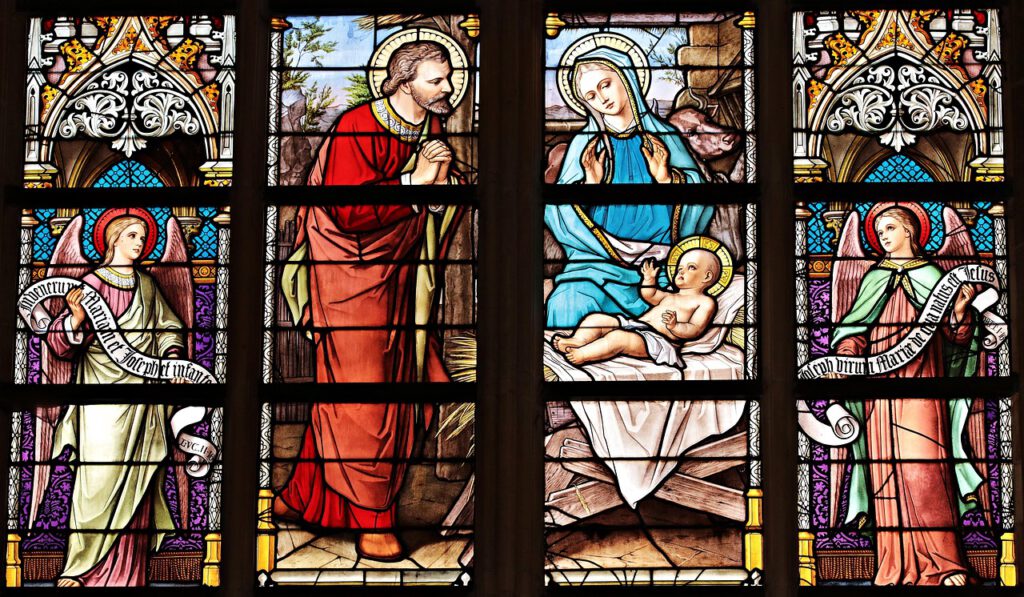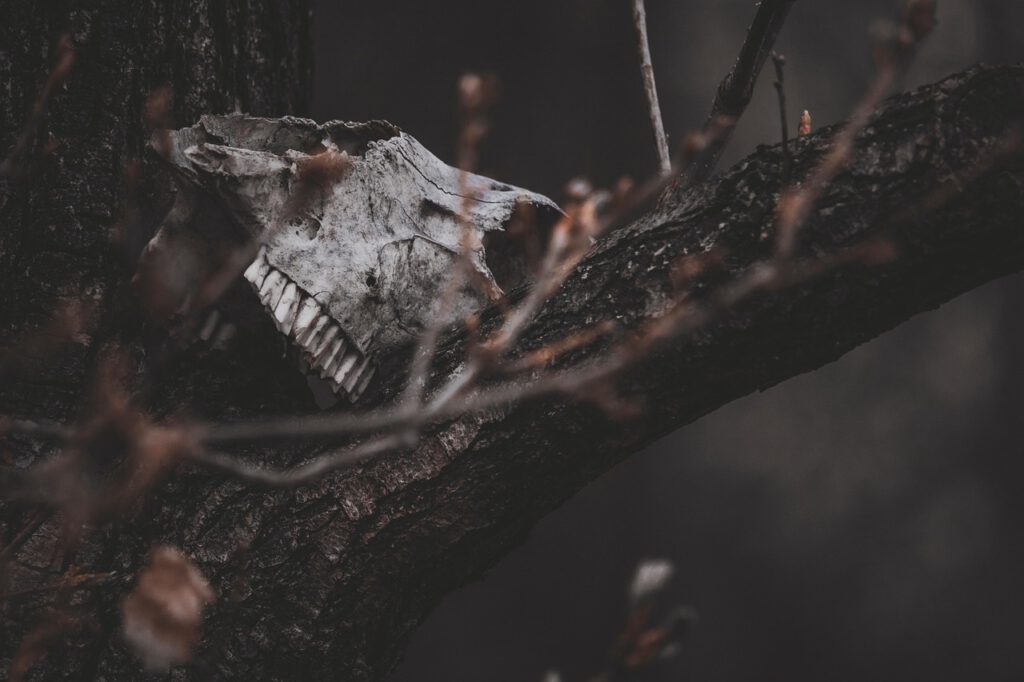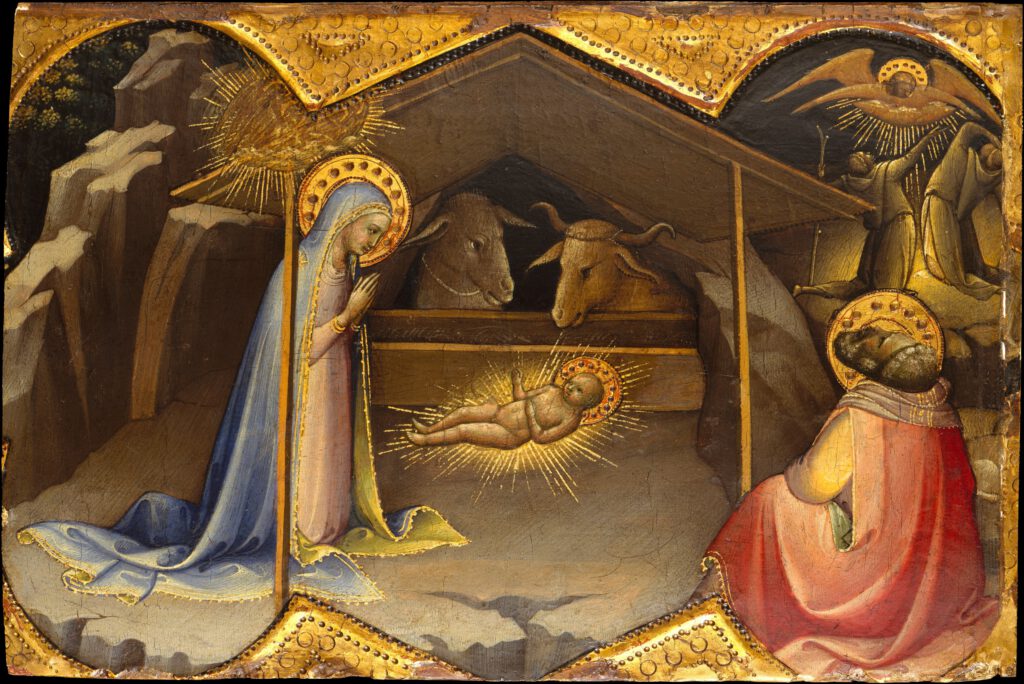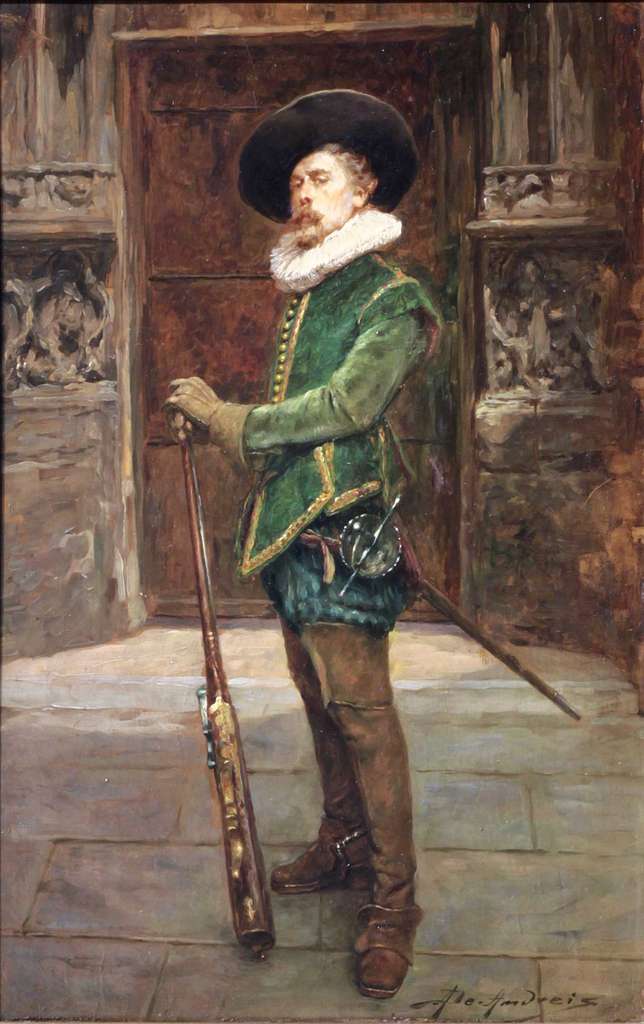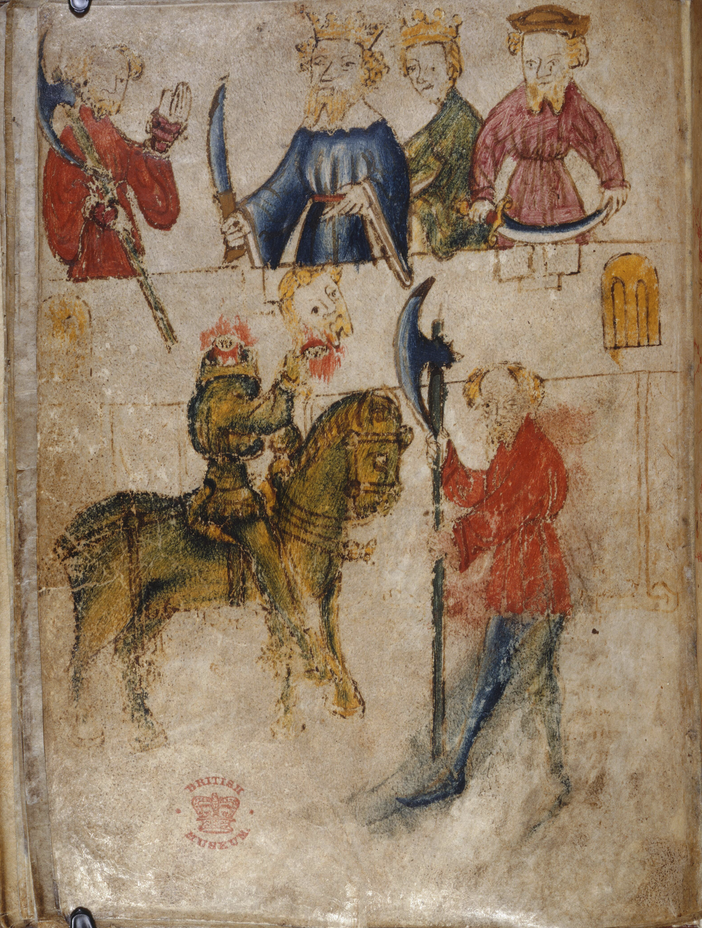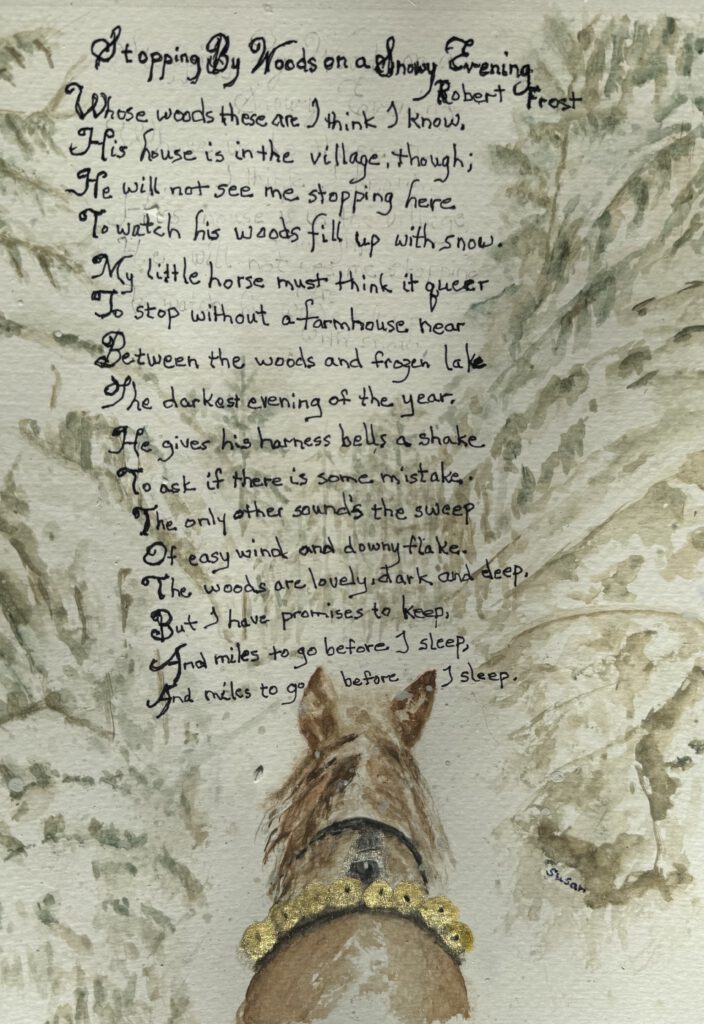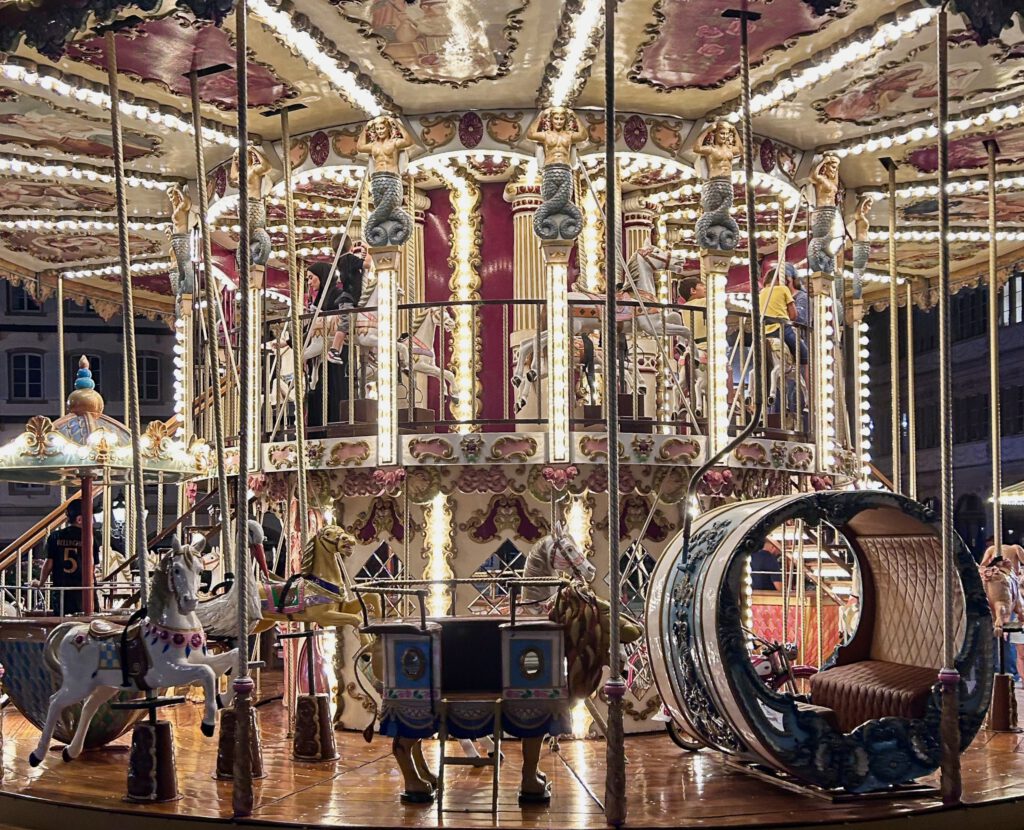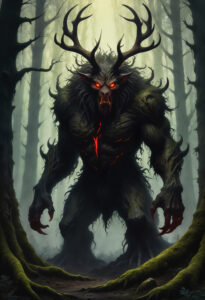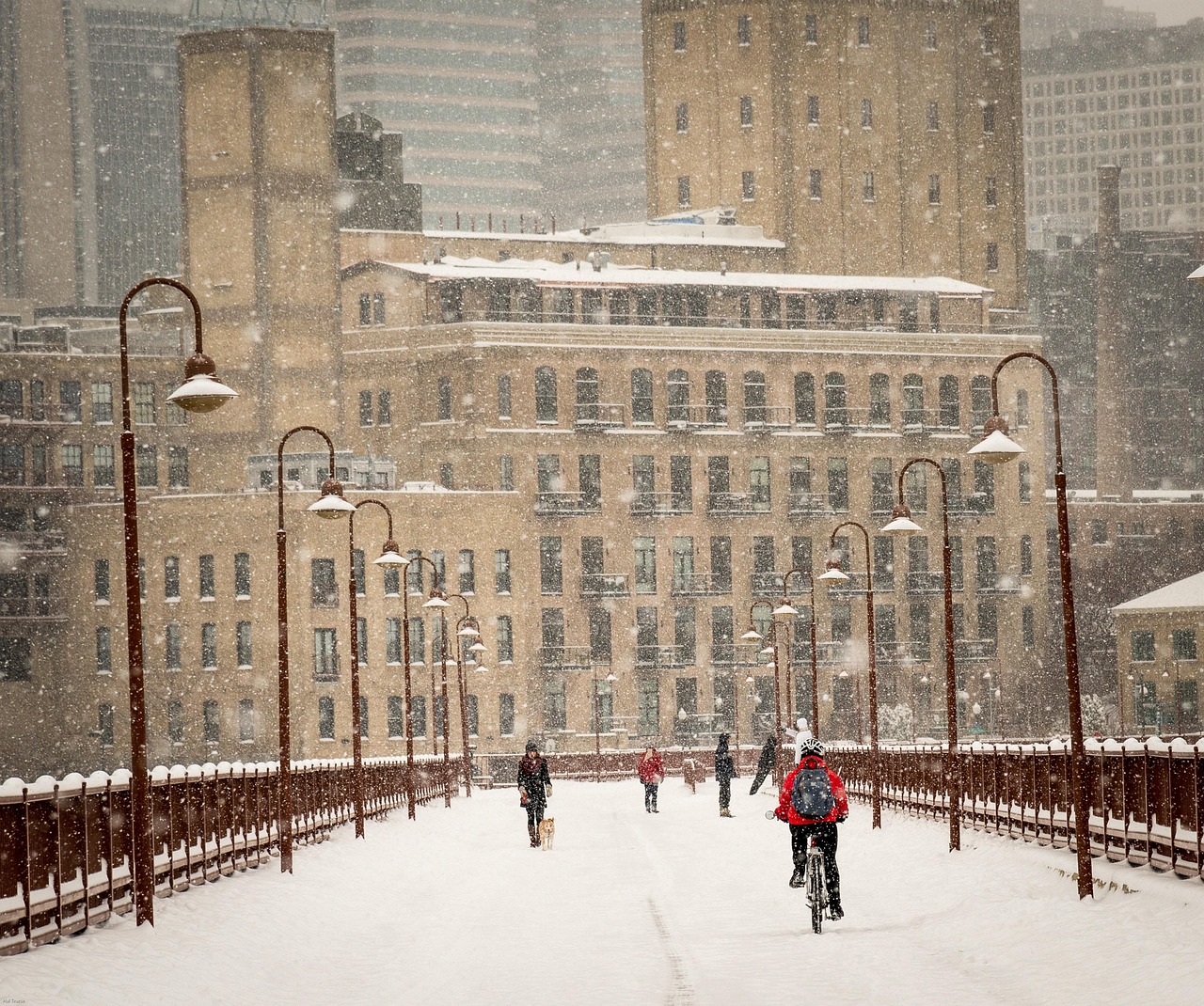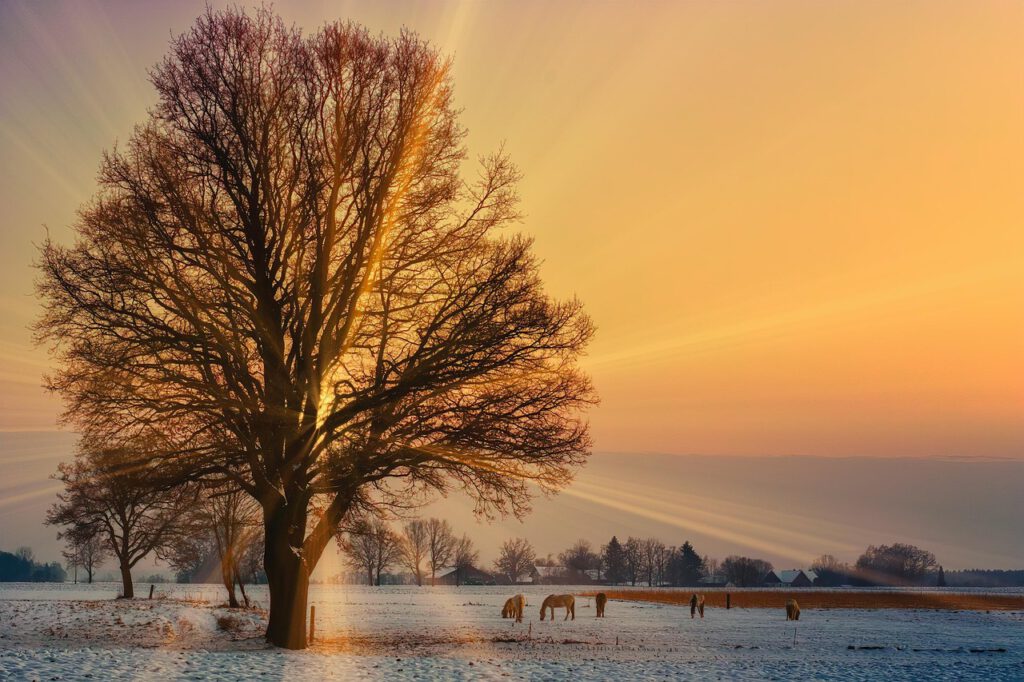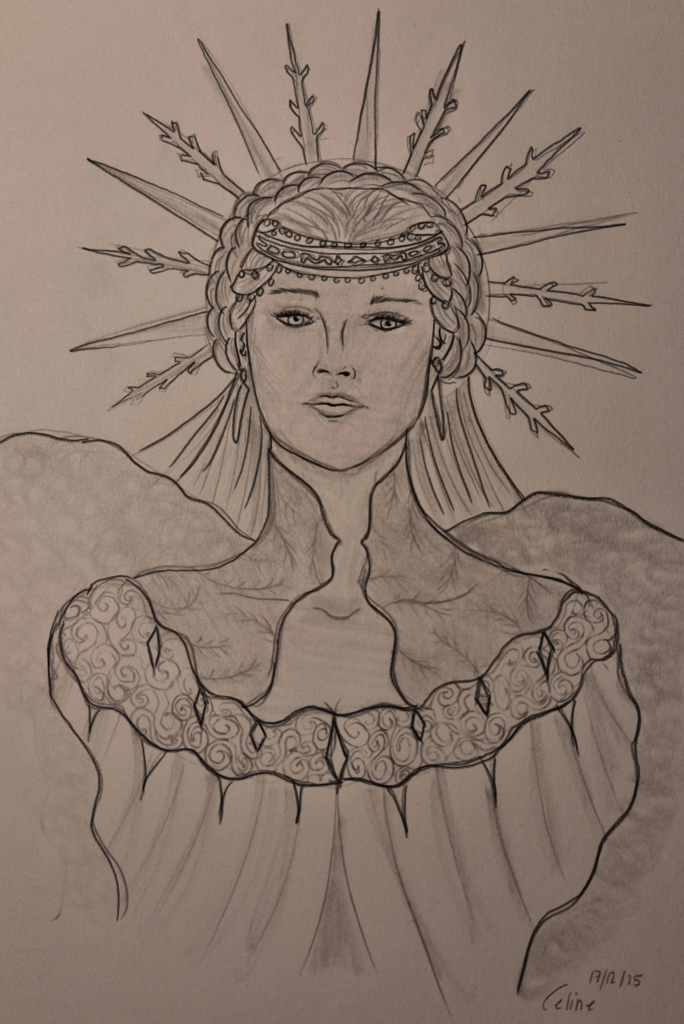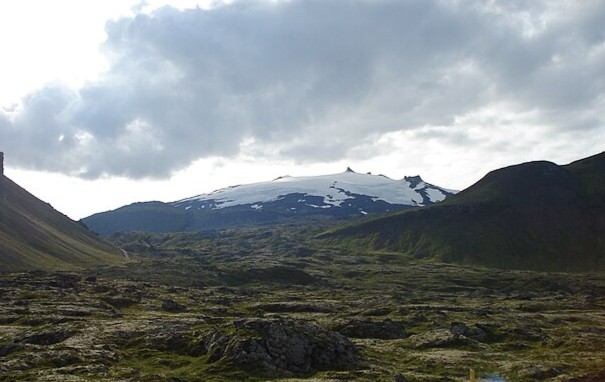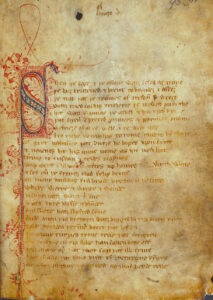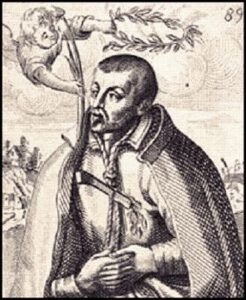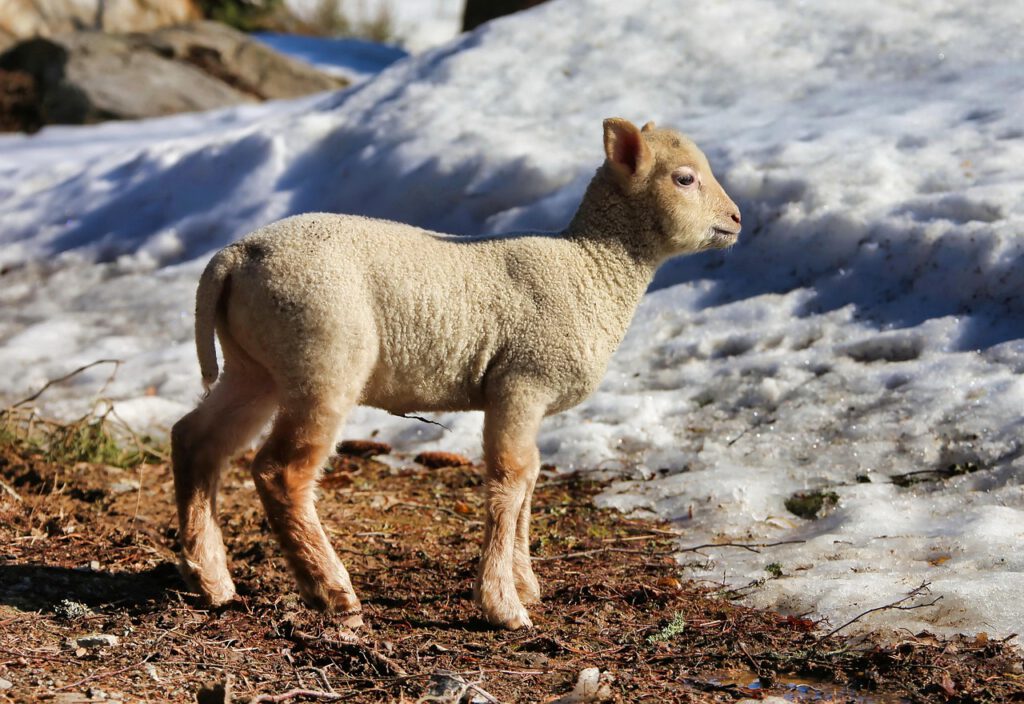“Vancouver Walking”: Contemporary Canadian Urban Poetry
Cecile Sandten
Published in Connotations Vol. 33 (2024)
Abstract
As one of the most important Canadian metropolises, Vancouver is characterized in equal parts by its settler-colonial history, with its dominating industries, and its pre-colonial indigenous population and environment. Since writers often focus on these aspects in conjunction with present-day problems, I will discuss a selection of Vancouver writers who portray the city through their historical, cultural, and poetic renditions. More precisely, I will introduce the poet Meredith Quartermain and her poetry collection Vancouver Walking (2005), which appears in the title of my essay. In many of her poems, Quartermain’s poetic “counter-flâneurs” (Carrera Suárez 854) move through sensations of history and place as they find themselves at the coordinates of perceptible and historical sites, drawing attention to a plethora of colonial and settler-colonial as well as indigenous locations. Michael Turner’s Kingsway (1995) is a collection of poems centred around Vancouver’s oldest thoroughfare, Kingsway, both a destination and a point of departure, while Bud Osborn’s hundred block rock (1999) presents the world of Vancouver’s disempowered: criminals, drug addicts, and prostitutes. Accordingly, the emphasis of this essay will be on different flâneur figures roaming and perceiving the streets of Vancouver, a postcolonial metropolis, with its historical, architectural, social, and cultural complexities. The city will be analysed within the context of the poems’ formal-aesthetic components as well as its history, rendered visible and perceptible through a specific urban poetisation and a counter-flâneur perspective. The focus of the analysis will thus be on the representation of historical and contemporary figures, with a view to the spaces they prefer(red) and in which they move(d), of the historical and poetic imaginaries that often draw attention to Vancouver’s colonial legacy.
1. Introduction: Perceptions of the City
Generally, cities and, more prominently, metropolises, have been described by what, in the 1960s, Henri Lefebvre termed “a sociology of the everyday” and by what Rem Koolhaas defined as “the generic city.” As a follow-up on this thought, in his city biography Mumbai Fables, Gyan Prakash writes:
It is undeniable that certain generic urban forms and architectural designs are visible in city after city across the world. Shopping malls, cafes, restaurants, multiplex theatres, entertainment complexes, tall office towers, and apartment buildings dot the urban landscape worldwide. These are spaces that invoke a feeling of placelessness. (21)
Even if this diagnosis of metropolitan design is true in many respects, I argue that these generalizations do not take into consideration the specificities and individual perceptions of cities beyond the common characteristics that Prakash has identified. To be more precise, Vancouver and, in particular, its contemporary poetry, exemplify the connection of the respective poems’ lyrical personae with its postcolonial cityscape: the history of the city is explored and is visually and metaphorically reflected on for the present day, as if on a city tour. Within this framework, the images evoked function as a medium of intense personal experiences. Meredith Quartermain (*1950) is depth-oriented in terms of the many historical contexts she discloses on her poetic city tours in Vancouver Walking (2005). Michael Turner (*1962) also provides us with concrete names and places in the poems of his Kingsway collection (1995), a compilation of linked poems that revolve around Kingsway, Vancouver’s oldest thoroughfare. Turner addresses encounters with ordinary local people, such as a taxi driver, a shop owner, and a young girl, and his speakers mentally meander or drive through the streets, providing anecdotal and abstract glimpses as well as sketches [→ 228] of experiences, thereby documenting the eponymous street, Kingsway. By contrast, Bud Osborn’s (1947-2014) poems in hundred block rock (1999), are characterized by the rhythm of the spoken word as well as the influence of jazz music. Osborn’s poems centre around Vancouver’s downtrodden: drug addicts, hookers, petty criminals—the marginalized in an otherwise prosperous and glitzy metropolis. Within this framework, a selection of poems from the poetry collections will be read as postcolonial literature, since they show a special awareness of concepts such as race, class, gender, economics, and power structures within the framework of Vancouver’s colonial past and present.
The reference to the city of Vancouver is underlined by the poets’ particular visual and linguistic arrangements. For instance, some of the poems are written in the shape of a diagonal line, resembling a street, or housing blocks (Turner), or zigzag walking (Quartermain), or with the words arranged as if in rhythmical patterns, thus visually reminding the reader of jazz music (Osborn). It can be argued that the vitality and expressiveness of these poems go hand in hand with the formal presentation, and that the flow of a poem frequently emphasizes the writing strategy employed by each of the three poets, epitomized in the sensual activity of walking, in search of history and community. In conjunction with formal aspects, the emphasis on the particularities of the city clearly stands out as the poems’ defining feature, i.e. the local and regional, especially in relation to Vancouver’s cartography, colonial history, and present-day life, and the notion of movement in the city (i.e. walking).
I argue along the lines of Michel de Certeau, who claims that the unmanageable and impenetrable city is transferred into a text from two perspectives, namely of Icarus and of the Wandersmann (92), that is, the spectacle and the everyday life. However, while the former implies the position of a “voyeur-god” (de Certeau 93), allowing the totality of the city to be comprehended, the latter relates to the “ordinary practitioners of the city” since they “live ‘down below,’” that is, below the threshold at which visibility begins. They walk—an elementary form of this experience of the city; they are wanderers, “Wandersmänner” (de [→ 229] Certeau 93). By contrast, as de Certeau explains, it is the “voyeur” who is able to see “the whole” (92). This is when the voyeur is lifted up to the “summit of the World Trade Centre” and becomes “a solar Eye, looking down like a god” (de Certeau 92). In what follows, I maintain that each of the poets under discussion emphasizes the notion of walking, or what may be referred to as contemporary postcolonial flânerie—what Isabel Carrera Suárez has termed: counter-flânerie. The city is thereby perceived not in its totality but as being “shaped out of fragments of trajectories and alterations of spaces” (de Certeau 93), that is, through walking at ground level.
2. Flânerie and the Appropriated Legacy of Pedestrian Aesthetics
The figure of the flâneur, conceived by Charles Baudelaire in his essay “The Painter of Modern Life” (1863) and, half a century later, explored by Walter Benjamin in his unfinished collage work The Arcades Project (Passagenwerk in German, written between 1927 and 1940, and published posthumously in 1982), remains a literary and cultural icon of the modern city (see Bock and Vila-Cabanes x). The flâneur, a figure embodying the principle of urban walking, observing, and detachment, has left an indelible mark on literature, especially that of the modernist period, and has fascinated writers across cultures and periods. It must be noted, however, that Benjamin’s often-cited text on “The Flâneur” from his Arcades Project (417-55), like the project more generally, is a collection of notes and fragments. It presents its readers with a mosaic of ideas and observations rather than a linear account that would provide a coherent theory. Thus, the figure of the flâneur remains open to interpretation.
Yet, the emergence of the literary figure of the flâneur is inextricably connected to the heyday of European imperialism, when the metropolis, in particular Paris and London, flourished at the expense of the subjugated colonies. This period saw the rise of the male, middle-class dandy flâneur evoked by Benjamin, who strolled, keenly observing the spectacle of the rising metropolis and the commodity culture that sustained it. The flâneur came to be the representative figure of expanding [→ 230] urbanity and modernity, as it is through his flânerie that he captures a particular moment of history. The enduring appeal of this literary figure and its later incorporation into literary and urban studies owes to the figure’s effectiveness in rendering the interconnection between the subject and a given space, and the movement-generated dialectic of that relationship.1
However, it is not only in literature that the figure of the flâneur is transformed and re-articulated to accommodate and account for the changing realities of the globalized transnational metropolis (see Bock and Vila-Cabanes x). The flâneur has received varied interpretations in critical scholarship, including postcolonial studies. For example, in my examination of flânerie in fictions of contemporary Indian metropolises, in what can be termed the “postcolonial flâneurs,” I detect a “persistent search for belonging”; what is more, in many instances, these postcolonial flâneurs no longer walk (Sandten, “Challenging and Reconfiguring Flânerie” 197). This is made apparent through a fusion of the representation of historical and contemporary events, through specific historical figures and urban designs, and through the experiences and perceptions of the poetic flâneur. Extending this line of thought, Alexander Greer Hartwiger asserts that
the postcolonial flâneur is the figure whose critical gaze provides a way to read the legacies of colonialism, oppression, and exploitation back into globalization and the economic, social, and political frameworks that shape the global city. The postcolonial flâneur is simultaneously a chronicler of history, a keen observer of the present, and an augur of the future. The contrapuntal reading that the postcolonial flâneur provides of the urban landscape leads to a polyvocal representation of a city and the voices that make up its history and its present representation. In order for that critical gaze to get established, the vantage point of the postcolonial flâneur becomes an integral part of reading the city. (7)
Greer Hartwiger’s definition provides a conceptual framework for understanding the ways in which flânerie functions in a postcolonial context. While these ideas will resonate in the poems discussed in the subsequent sections of this essay, there is also an area of divergence that [→ 231] underscores the situatedness of flânerie. Greer Hartwiger’s theorizations of postcolonial flânerie in relation to Teju Cole’s acclaimed debut novel, Open City, entails the idea of privilege possessed by the postcolonial flâneur in terms of their mobility and access to “culture and consumerism” (Sandten, “Challenging and Reconfiguring Flânerie” 199). In the poems under discussion, however, what is striking, in particular in Osborn’s poems, is the postcolonial flâneurs’ precariousness, a condition that corresponds to the time and places in which they traverse.
When focussing on Vancouver, in the context of both history and the activity of walking, the most arresting aspect, according to Glenn Deer, is “[t]he displacement of civic interaction by the urban garrisons of the glass residential tower, and the rise of the new regimes of surveillance and visual culture, [which] are figured in different, even contradictory ways” (Deer 122). This highlights the two sides of Vancouver. Apart from focussing on modernization and urbanization, many Canadian writers discuss the challenges that come with living in a multicultural society. They often use irony to reflect on issues related to divisions, exclusions, and inequalities that disproportionately affect the Indigenous population and those living in precarious conditions.
Noticeably, a more recent trope employed frequently in Canadian literature on cities is that of city walking,2 often in conjunction with female flâneurs in precarious situations (i.e. prostitutes). This writing strategy of city walking is accompanied by more general characteristics, such as literary self-reflexivity, the search for a Canadian literary identity, the ethnic and the regional, and writing by women authors (Löschnigg and Löschnigg 9). The reason for my particular focus on the poems of Quartermain, Osborn, and Turner is their shared historical and local engagement with poetic flâneurs in the postcolonial setting of Vancouver. Through this particular constellation, they become what Carrera Suárez has called “counter-flâneurs” (854).3 The urban explorations of these counter-flâneurs differ from those of modernist flâneurs in the sense that they observe, question, and re-imagine a number of different boundaries and urban identities in Vancouver—literally and metaphorically. As such, it is through their depiction, generated [→ 232] through their flânerie, that boundaries are both explored and then blurred. Alongside these overlapping concerns of an aesthetics of historical exploration as well as local and personal experiences, all three writers imbue flânerie with a sense of loss, irony, intersecting histories, histories of violence, and poetic traversal. This particular idiom of historical digging, deployed in conjunction with the trope of flânerie as a pedestrian aesthetics, is politically resonant; it manifests in the subject positions of the lyrical personae as individuals strolling through a glitzy, global, and simultaneously declining and downtrodden Vancouver. Through walking, observing, mapping, and the notion of making sense of the city, all three poets—albeit to different degrees—establish a link to the history of the place, to its myths of origin and its contemporary state.
It is crucial to point out that “Vancouver has been called a city without a history,” as Vancouverite historian Daniel Francis (4) avers. According to Francis, this is “partly because of its youth but also because of the way that it seems to change so quickly that it leaves no trace of itself behind” (4). Within the scope of this essay and in what follows, I shall attempt to point out how the historical and poetic imaginaries of Meredith Quartermain, Michael Turner, and Bud Osborn, through the lens of counter-flâneurs, have voices deeply grounded in a historically, culturally, and architecturally rich environment founded and inhabited long before European settlers arrived. Moreover, since the literary figure of the nineteenth-century flâneur has transformed from the anonymous Parisian dandy to the postcolonial flâneur, the conceptualization of Vancouver’s diverse poetic counter-flâneur figures requires the examination of differing approaches to walking through a conjunctive reading.
3. Meredith Quartermain: Vancouver Walking—Zigzagging the Metropolis Through Time and Space
Meredith Quartermain’s poems stand in the tradition of the long narrative poem prominent in Anglo-Canadian literature. Her poetry deals with historical themes, as in “Thanksgiving” (Quartermain 3-7), which [→233] the poet uses to address the historical contexts of Vancouver through time and space,4 thus transforming them in a postmodernist manner into multi-perspectival assemblages. The poet provides descriptions of historically significant persons and the environment, including buildings and concrete infrastructure, but focuses on those that seem uninhabited or disowned. As the title of her collection, Vancouver Walking, suggests, and as the titles of some of the poems also indicate, many of the poems are about walking.5 However, all the poems explore historical facts, juxtaposed with contemporary everyday aspects and experiences. A sense of loss and irony infuses her poems, created through a connection with the Indigenous people and their claim to the land. In many of the poems in her collection, Quartermain’s poetic counter-flâneurs move through Vancouver by means of specific references to history, places, and people, while situated at the coordinates of perceptible and historic buildings or the remains of their former homes, drawing attention to a variety of both settler-colonial and indigenous sites, and even contemporary locations that create a palimpsestic cityscape.6 Quartermain’s flâneur wanders through the urban landscape, perceiving it step by step and word by word, traversing the metropolis with its grids and layers that overlap in time and space.
The poem “Thanksgiving” is written in free verse with, however, strong use of internal rhymes. Most strikingly, it is presented as an authentic walk through Vancouver; the poem is written as if its speaker was strolling in a zigzag manner, presenting an insider’s perception and chain of associations while walking. Places, names, and situations appear in rapid succession, visually reflected by the poem in its formal presentation on the page. The poem reveals an implicit speaker: a “girl in Ontario” (l. 1),7 who, however, remains obscure (Wunker 16).8 The title of the poem expresses an ironic reading of history, since it signifies the first Thanksgiving celebrated by Sir Martin Frobisher and his crew in the Eastern Arctic in 1578 (see McIntosh, Mills, and Bonikowsky). Through the poem’s rather critical tone of voice, the zigzagging movement through time (history and the mention of historically significant [→ 234] persons) and space (concrete buildings, abandonment, and dereliction), Quartermain re-assesses Canada’s colonial legacy.
The implicit speaker guides us through the streets of Vancouver which she explores by wandering from street to street and building to building, calling up historical pasts and simultaneously explaining the present moments she perceives as she strolls. In doing so, she sketches the city of Vancouver via a zooming-in, that is—similarly to de Certeau’s Wandersmann—not opening up a view of the city from above, but rather from the sea (from “down below”). Uncharacteristically for city literature, the speaker first lists the names of the landscape’s birdlife along with man-made items, “sawmills, sewage, shacktown” (l. 15) that represent Vancouver’s founding era. The natural environment, the specific (Canadian) sea birds, and the early town life are listed in a disparate spatial-semantic clustering, thus exemplifying the aspects that were eventually destroyed by the railway line, another symbol of colonial industrialization and erasure. In the poem’s opening lines, “Gore Avenue—track of an old skid” (l. 5), the speaker addresses the dilapidated urban area, with its large, impoverished population, before giving some specifics of the location:
Gore Avenue—track of an old skid
Surveyor General of British Columbia
ran from a True Lagoon
to a place between first and second narrows
the Spanish said people called Sasamat
—no translation—
teals, widgeons, shovelers, buffleheads
scoters, redheads, golden-eyes
blue herons and the Branta canadensis
lagooned at Ka wah usks—Two Points Opposite
sawmills, sewage, shacktown
till the railways paved it over. (ll. 5-16)
Vancouver was founded in 1867 as “Gastown,” then renamed “Granville” and, finally, in 1886, Vancouver, after British Navy officer and explorer George Vancouver (Francis 12, 13, 32-35). The city was settled due to the establishment of lumber mills, particularly Hastings Mill, which holds a powerful significance in the establishment of Vancouver [→ 235] and is implied in the poem by multiple indications of the street name, “Hastings Street” or “Hastings and Main,” as well as recurrent references to the sawmill. By mentioning the “Battle of 1066” (l. 68), Quartermain digs even deeper into history, implying a connection between the Battle of 1066, when the Normans under William the Conqueror fought the Anglo-Saxons in the English sea town of Hastings, and the Hastings Mill Company, which she thus signifies as another battleground that paved the way for the contemporary city of Vancouver. In addition to Hastings Street, many other streets, as well as important historical buildings and personalities, are mentioned by name to establish the story of Vancouver’s colonial settler founding, referring back to
[the] sawmill owner […] Edward Stamp, a sea captain from Northumberland who, impressed by what appeared to be the limitless abundance of the coastal forest, launched the British Columbia and Vancouver Island Spar, Lumber and Saw Mill Company on the south shore of Burrard Inlet in 1865. (Francis 13)9
In many instances, however, this traditional founding myth is balanced by the inclusion of ironic comments, set pieces of memories, and present-day as well as intertextual references. The title, “Thanksgiving,” while not referring to Vancouver itself, also ironically alludes to the supposed achievements of the city’s founding fathers and their critical view of the city’s population. Thus, “Gassy Jack’s saloon and hookers” (l. 58) were criticized by the then-authorities for supposedly having had negative effects on the local workers, while the construction of a library, the “Carnegie Library” (l. 78), was intended to impart knowledge to the workers but is used differently today: “People up and down the steps to the public toilets” (l. 79). Comments like this from the implied speaker, but also a comment such as “people have lived here 10,000 years—” (l. 41), call into question the man-made city, which has expanded and taken over land previously inhabited by an Indigenous people who were ultimately exploited and are now neglected, as represented by lines such as: “Rag man on a bicycle steers outrigger shopping-cart of rubbish” (l. 94) or “sagging stoops, rags in dirty windows” (l. 117). [→ 236]
The formal structure of the poem, with its 136 lines and approximately 19 sections (there are occasional one- or two-liners that are not read as sections or stanzas), often uses indented lines, resembling both a visual and content-based zigzag course through Vancouver, much like the movement of the counter-flâneur, which is reflected in the poem’s formal structure.
The European history of the ideology of discovery, starting with the Spanish, who arrived in 1791, is invoked by the word “Sasamat” (l. 9) for which there is no translation (l. 10), as well as by reference to the magnificent Nevsky boulevard in Saint Petersburg, Russia.10 The excess of simultaneous semiosis in both city and text (see Gurr 21), as well as multiple intertextual references (e.g. “cakeshops in the Nevsky,” ll. 116, 135—from Ezra Pound’s Cantos), trigger allusions to battles, including daily battles in contemporary Vancouver. For example, the “Keefer Bakery” (l. 95) is mentioned, which sells “bean cakes, almond cakes” (l. 95) and the “[a]lmond cookies, in packages—not cakes” (l. 100). This reference to the bakery and the cookies is addressed in conjunction with a question and the speaker’s personal memory: “Do you have the melting ones like … / like a memory of 30 years ago” (ll. 101-02). In the next instance, these memories are contrasted immediately with the contemporary situation: a barefoot beggar rides a rusty bicycle in Maclean Park “through the gulls and pigeons, / and plastic bags” (ll. 108-09).
The cultural idiosyncrasies, e.g. “Thanksgiving” as a reference to and critical assessment of European colonialism, and “cakeshops in the Nevsky” (l. 116) in contrast to “Sagging stoops, rags in dirty windows / rowhouse Jackson / Vancouver Improvement Company prominent shareholder” (ll. 117-19), constantly juxtapose a supposedly glorious past with a downtrodden present that speaks of exploitation and the annexation of land. Placing the word “Bloodshed” after the longer quotation from Ezra Pound’s Canto, in which the Russian Revolution is depicted, triggers the speaker to bemoan Vancouver’s lost past:
Thickened, clotted, dried cloth set into our garment.
Land cut in gore-shaped pieces
to furnish with wedges [→ 237]
the flats Khahtsahlano called sk’wa chice—
deep hole in the bottom (ll. 129-33)
Jumping around again in time and space, Quartermain recalls the battles of the Russian Revolution on the one hand, but by referring to “Khahtsahlano” and “sk’wa chice” (see Francis 6-7)11 she addresses the battle of the “English Bay” and “Kitsilano Beach” in 1891, when the Canadian Pacific Railway (CPR) sought to expand on disputed territory (McCuaig). This battle and bloodshed are part of the people’s cultural memory, underlined by the notion of “set into our garment.”
Another historically important person referred to in the poem is “Chart-man Richards” (l. 18) and his “Plumper” (l. 19),12 who, as the speaker suggests, was responsible for the selection and designation of place names along the coast of British Columbia. In Vancouver, for instance, he named one of the inlets “False Creek,” upon which the speaker ironically comments: “Richards called it False—not a true creek” (l. 18). Moreover, Quartermain mentions significant historical figures, including Captain Raymur, Stamp, Gassy Jack, and Rear-Admiral George Fowler Hastings, as well as street names such as “Gore Avenue,” “Keefer Street,” “Hastings Street,” “Main,” and “Georgia.” In addition, she refers to buildings and locations, such as “Chau Luen tower” (l. 24), “Fan Towers South” (l. 27), “New Chong Lung Sea Foods” (l. 36), “the Ford Building” (l. 81), “the Toronto Dominion towers / and terracotta fortress of Hudson’s Bay Co.” (ll. 87-88), “Keefer Laundry” (l. 92) and “Maclean Park” (l. 104). These references, along with concrete dates and times, show how the counter-flâneur navigates an invoked mental and concrete map of the city over time and space.
Through the semantic cluster of food and several other aspects that can be identified as Asian, the implicit speaker, on her walk, also addresses the presence of the Chinese in Vancouver. Initially arriving as laborers for the construction of the transcontinental railway, many Chinese settled in Vancouver during the earliest days of the city’s history (see Francis 69); they are acknowledged in the lines below:
Plump! a dozen fans open-brooms beating rugs
Tai chi brush knee— [→ 238]
Cloud-ears pile up a wall—black and curly.
Sacks of dried mushrooms, dried fish and shrimp.
Red roasted seeds. Durian. Prickly fruit.
Barbecue duck and pork. Tanks of crabs, shell-fish.
A shiny fungus you see ledged out from trees
that clouds hear… (ll. 42-49)
This quotation underlines that the implicit speaker, who uses the personal pronoun “you” (l. 48), is speaking directly to an addressee, as if taking the reader through the streets like a city guide. She thereby describes the supposed stalls with different foods on display rather than rendering other senses. Without making direct mention of it, the Chinese community is portrayed as having become part of downtown Vancouver’s cityscape, like everything else the implicit speaker perceives and indicates on her alternative guided tour—a tour that stands in contrast to typical city tours in which tourists are taken to usual sightseeing sites. Quartermain employs a similar writing style in other poems in her Vancouver Walking collection. In these poems, she references historical figures, street names, and other material sites. By doing so, she effectively brings to light the multi-layered, socially and historically significant geography of the city of Vancouver. However, she does this through a counter-flâneur perspective.
Accordingly, in Quartermain’s poem “Walk to commercial drive” (Quartermain 8-13), “the speaker layers inequities of the past onto the landscape of their present” (Wunker 26). In this poem, the persona again addresses a past event, namely the “600 Chinese killed in the Fraser Canyon—/ landslides, careless dynamite” (ll. 91-92) while walking from “Union Street and Vernon’s drive—” (l. 108), where she sees “Scarlet creeper twining up a telephone pole / at the Happy Planet juice factory” (ll. 109-10). The persona, in palimpsestic style, reveals past atrocities suffered by the Chinese workers, a situation in which the speaker, being in the present and showing quotidian objects of the city, simultaneously addresses the “[a]ntipathy toward the Chinese [which] was motivated by a combination of racial prejudice and economic rivalry” (Francis 71).13 [→ 239]
The analytical category of the walking counter-flâneur figure (e.g. “Back to Gore—The Skid—” (“Vancouver Walking” l. 103) aids in identifying the city setting via the various temporal and historical levels, discourses, and spatial-semantic references to Vancouver. These can be materialized with, for instance, the help of a map, images, or other auxiliary objects in order to fathom the layered structure (see Wachinger 272), that is, the palimpsestic space of Vancouver in the historical, textual, and discursive dimensions of meaning invoked here. Nearly every line in Quartermain’s poem provides the reader with palimpsestic overwrites and deviations, surprising turns, and ironic comments, reminding us that historical facts can be erased, interpreted and commented upon, and that they essentially are transmitted through human agency. Through her counter-flâneur, Quartermain renders her poems into discursive approaches to history that allow her to juxtapose facts with present-day experiences in the city, and thus create an alternative archive. Quartermain’s counter-flâneur subverts Vancouver’s official history since these official archival records frequently maintain colonial ideologies in their collection of cultural knowledge.
4. Michael Turner’s Kingsway: Walking Through Past and Present on Vancouver’s Oldest Thoroughfare
Michael Turner’s poetry collection Kingsway is subdivided into three parts: The first, “Kingsway,” consists of ten poems, numbered with lowercase Roman numerals. Poem number “(iv)” (Turner 5) runs across the entire page, from top left to bottom right, in a diagonal line, each line including two or, at the most, three words. In addition, the closer the poem reaches to the bottom of the page, the denser it becomes in terms of paragraphing and number of letters. The other poems in this section are presented in blocks that seem to have been allocated around poem “(iv),” thus poetically visualising the longest diagonal road in Vancouver, Kingsway. Section two of the collection is titled “15 Poems about Kingsway”; here the poems are numbered 1-15 and are about the [→ 240] everyday experiences (e.g. karaoke, a blow job, eating at restaurants, etc.) of people that include the second-generation Italian taxi driver Lorenzo, an art student, a Mr Browning, and a migrant who does not even speak English. The implicit speaker observes and describes these people and situations, thus giving us glimpses into life in a seemingly ordinary city. The third section, entitled “Kingsway: A Re: Development Project,” is comprised of 21 poems with individual titles, some of which are taken from poems by other writers.
The entire collection, as well as each of the three sections, opens with a copy of a black-and-white photo: the first photo displays a blurry excerpt from the map of Vancouver, showing the typical grid structure and the area around Kingsway, which is indicated by a black diagonal line. Within this framework, Turner incorporates typographical idiosyncrasies into his poetry project, resulting in poems reminiscent of “concrete poetry.”14 He does this in his metapoetic poems, e.g. his poem “1,” in which he relates the housing blocks to the “stanza blocks” (Turner 16, l. 12). Through the use of visual composition and ironic contrasts, a spatial-temporal walk is implied, during which the speaker, sometimes explicitly, sometimes implicitly, reveals his perceptions of the cityscape.
Besides evoking a present-day walk on Kingsway, Turner’s poems also reflect on Vancouver’s history, especially with reference to street names that go back in time to Canada’s settler-colonial history, as, for instance, in poem “(i)” (Turner 2):
1 a.m. this road, this way
diagonal, in opposition
2 the grid, the monarchy
of streets: Beatrice, Sophia
3 princes, Earls, a Duchess, lords
& ladies waiting at
45 degrees with soldiers, explorers
businessmen, saints
6 places in Australia, a Salish
name that means “people of many names” from
7th to 10th Avenues, indefinitely
a taxi driver drives the whole
8 miles with a carload [→ 241]
of offshore investors
9 times before giving up
looking for the historic Gladstone Inn
10 hours later swerving to
avoid a fallen man sleeping off
Princess Beatrice, for example, was the fifth daughter and youngest child of Queen Victoria and Prince Albert. Princess Sophia was the twelfth child and fifth daughter of King George III and Queen Charlotte. William Ewart Gladstone served as Prime Minister for four separate periods in the English Parliament. Thus, street names also tell Vancouver’s colonial history. The “historic Gladstone Inn” (l. 16), which the taxi driver is not able to find, serves as an ironic comment that hints, on the one hand, at the colonial history and, on the other, at the fact that it is ridiculed, since an inn named after Gladstone eventually can no longer be found in the city today, thus also signifying that the colonial times have become elusive to contemporary city dwellers. In this poem, moreover, Turner integrates numerals that replace words. This is done to emphasize Vancouver’s grid structure which is characterized by a hierarchical structure through the “monarchy” (l. 3), through which the diagonal Kingsway cuts in a seeming counter-movement.
Further, in lines 9 and 10 of poem “(i),” the Salish are mentioned. The Salish were members of a group of North American peoples who inhabited areas of the north-western United States and British Columbia. Since the poem is strongly characterized by the use of enjambment, several expressions convey a double meaning, as shown by the following example in the context of referencing Canada’s First Nations: “6 places in Australia, a Salish / name that means ‘people of many names’ from / 7th to 10th Avenues, indefinitely / a taxi driver drives” (ll. 9-12). On the one hand, Turner refers to a street named after the Salish, which he does not identify directly. On the other hand, through the use of the word “indefinitely,” he re-constructs an ever-existing place for the Salish in the topography of Vancouver, more precisely, in a certain area around Kingsway: The Salish have always been there and will remain there, as underlined by the unidentified street name, since colonial [→ 242] naming has involved taking possession of that which is named. By contrast, the taxi driver drives “indefinitely” through Vancouver’s nightlife in search of the Gladstone Inn. Thus, the double use of “indefinitely” indicates that multiple layers of names and meanings exist simultaneously. Turner thus creates a palimpsestic cityscape that connects past and present through historical and poetic renderings. Moreover, his implicit speaker, a flâneur character who appears in each of the poems throughout the entire collection, opens up the opportunity to integrate the material world, the city—by referencing the street names, as if guiding us through this specific part of town—and the process of re-imagining this same city poetically and aesthetically.
In poem “(iii)” (Turner 4), Turner also hints at the construction of Vancouver, and, more specifically, of Kingsway as an important commercial and transport-related thoroughfare: “the British cleared the way / to link the navy in the inlet / with the business of New West” (ll. 9-11). He again alludes to the colonial past which he deconstructs in the next two short lines: “now people get on / just to get off” (ll. 12-13), emphasising the constant change epitomized by the coming and going of seemingly disillusioned people in the city.
In poem “(v)” (Turner 6), the idea of a simultaneously existing past and present is addressed when the implicit speaker turns to trucks that transport goods: “the first trucks / of the new day / are yesterday’s trucks” (ll. 4-6). And these “yesterday’s trucks” carried a specific cargo: “2-by-4s / of Douglas fir / Fur coats made / of beaver, bear / mink, seal / sealed palates / of minced salmon / containers of / office supplies like / waybills, staples / bags of briquettes / for barbecues” (ll. 13-24). With this linguistically and vocally interwoven enumeration of goods from past and present times in these short, clipped lines Turner reiterates the continuation and transformation of the flowing of past and present over the Kingsway thoroughfare.
However, by simply implying certain aspects rather than spelling them out, Turner, through the semantic cluster of a diversity of items, ironically addresses continuation. The notion that the cityscape still [→ 243] holds the memory of the past that the counter-flâneur-like voice presents guides the speaker to meditate on everyday items and relics and to make the worlds of the past and the present blend in ironic fashion, as underlined by the numerous uses and variations of the verb “meet” in poem “(ii)” (Turner 3). Poem “(ii)” is almost entirely without punctuation, except for a colon in the first line, after which the perception of the movements through the street begins. With regard to the formal construction of the poem, there are no sentences, and the words all flow into one another. Thus, at the content level, the meetings are always ephemeral and often absurd (“where / pink neon meets a robin’s egg blue” (ll. 2-3). The poem’s irony also stems from the idea of “meeting,” —written as “meat” at one point. Everything and everyone seem to constantly “meet” on Kingsway, often without having any specific connection. The irony is produced by the use of the homophonic word “meet” which occurs ten times in the 15-line poem. Generally, the overall structure of the poem can be seen as ironic, as there are no real divisions between things, moments, and the past, all of which are loosely connected by “meeting,” made evident in the seemingly arbitrary enjambments. The past is made present through the street names, which, with “King Ed,” “Victoria,” and even Kingsway itself, imply Vancouver’s colonial past. The poem’s structure is thereby broken up; everything is in constant flux. The notion of “ways / like me” (ll. 14-15) can be read as a personification of Kingsway, which is thereby presented as the meeting place/space of material, cultural, economic, and immaterial items (e.g. “deep blue summer night sky,” l. 12) along with people (e.g. “a single/Chinese/family,” l. 4; slashes in original) in a palimpsestic urban environment. The lyric persona thus wanders simultaneously through time and space.
In Turner’s poems, which are free of standard punctuation, time is unmarked and slips rapidly, moving from past to present or present to past, with unpredictable enjambments, with internal rhymes and repetitions, resulting in a sense of inescapable walking or traversing. Turner’s poems also often register a speaker’s position within a real (Kingsway’s past and present) and metaphoric cityscape (poetry). By [→ 244] allowing his poems to register perceived senses of space, Turner becomes both a witness and an agent of Kingsway as a response to the exterior space. The counter-flâneur figure experiences the cityscape on his walk and through his memories and insinuations about Vancouver’s oldest thoroughfare, Kingsway.
Turner’s poetry differs from Quartermain’s as he attends less to the historical events, figures, buildings, and sites, and more to the city’s everyday life, especially in the third part of the collection “Kingsway: A Re: Development Project.” Through his emotionless, often invisible, counter-flâneur figure, once again, numerous people and places, including shops, restaurants, and names of people, are conjured up in his meandering mode of writing—and yet, these people’s dreams and aspirations are barely visible. By contrast, the ordinary citizens are shown as struggling with their everyday life tasks, as in “Anticipate. Our Drive Doubles as a Device of Future” (Turner 63), in which the map becomes “useless” (l. 1), because the addressee is “ripping it still / useless you can’t / read it you won’t / find Pearl or Cherry / that way you won’t / find anyone around / to help you” (ll. 4-10). Moreover, the “dead ends” (l. 20) “will / only further contribute to / your frustration where / your decision to do something / only compounds your sense / of abandon” (ll. 21-26). Life in the metropolis seems to become more and more exhausting, so that the advice the implicit speaker gives his addressee is to “lease a new car every year / so you’ll never have to / get it tested then / stop driving” (ll. 32-35). The notion of the “dead end” and, ultimately, automotive immobility—within the framework of intertwined lines and words—represents, in an interlinked way, the experience of urbanism and, in particular, the specificity of the area around Kingsway. By focussing on different people and their experiences, differing perspectives and perceptions, Turner shows that Kingsway is a place of disillusionment and hope but also a place where one can get lost, as the final poem in the collection makes unmistakably clear: Kingsway is a thoroughfare of people, lives, ideas, and movement; it is a starting point, a destination, and even a “dead end.” Consequently, through his intertwined critical reading of past and present, Turner’s persona can [→ 245] be read as a counter-flâneur, in the sense that he provides, in a postmodern and ironic mode, poetic nuances of perceptions of Vancouver that are intimately connected through the Kingsway thoroughfare and its everyday life trajectories.
5. Bud Osborn’s hundred block rock: Voicing and Picturing the Downtrodden in Vancouver’s Downtown Eastside
While Quartermain and Turner’s poems navigate the relationship between place, time, and history, although to different degrees and in differing fashion, Bud Osborn’s poems depict place as a concrete space of rejection for his flâneur figure. “I’m so amazingly alive, I’m dancing on my own grave!” Osborn writes in his bio-note “testament to survival” (“100 Block Rock”). In transforming home into street, and thus an un-fixed place, everyday life in Vancouver’s downtown—including sounds and other sensual perceptions in lines that are reminiscent of jazz music—he creates a space that reflects on the precarious conditions of life in this Canadian metropolis. According to Erin Wunker, Vancouver’s Downtown Lower Eastside is known as the “poorest postal code in Canada” (16). Within this framework, it is the most marginalized community in the otherwise most expensive North American city portrayed by Osborn.
Moreover, Osborn’s poetry emphasizes the sound quality and the typographical appearance of the spoken word, as in the title poem “hundred block rock” (Osborn 101-05) and other poems that are written in block form and thereby resemble blocks in streets. The breaking of conventional linguistic restrictions through repetition, as in song, abandonment of standard punctuation, and the use of lowercase letters, is done for the purpose of highlighting undesirable subjects, mirroring the visible gentrification in the urban space of Vancouver. The focus in his poems is on a lyrical persona who self-referentially and self-reflexively addresses themes such as poverty, drug addiction, violence, prostitution, marginalization, loss, and, ultimately, survival. His people, as [→ 246] Osborn put it in one of his poems, are “junkies winos hookers cripples crazies thieves welfare buns and homeless freaks” (40), thus alluding to the ugly side of the Downtown Eastside. According to Francis, “[t]he downtown’s East End had always attracted a population of the poor, the transient and the elderly to its cluster of old hotels and rooming houses” (218). In addition, “Vancouver had long been home to a flourishing drug trade” (Francis 218).15 However, as Kofi Campbell (274) points out, though Osborn does eschew historical aspects, he does so only partially, since in his poem “jackson avenue and east hastings” (Osborn 56), the poet also openly addresses a more contemporary part of Vancouver’s history, namely the sex workers who were murdered between the mid-1970s and the autumn of 2001, a series of murders now known as the “Pickton case” (see n8). According to Francis, “the missing women left a horrible stain on the reputation of the city. Pickton may have been the murderer, but the community was complicit in his crimes” (222-23). Moreover, as Wunker points out, “[m]any of them [the missing women] were Aboriginal; all of them were living on the margins of society” (16). Thus, Osborn also addresses indigenous predicaments, especially those of women, reading them in line with other marginalized people in the community.
On an extra sheet included in my copy of hundred block rock, there is a handwritten note reading “Vancouver Folk Music Festival Program, July 99,” an advertisement for the event “Vancouver—Bud Osborn with Davis Lester & Wendy Atkinson.” Its contents are revealing, showing Osborn also as a community worker:
In the two years since poet Bud Osborn last performed here, almost a thousand of his neighbours have died from heroin overdoses. In his neighbourhood, the tuberculosis rate has risen to 232 cases per 100,000 people. The national rate is nine. More women have “disappeared” from the streets, never to be seen or heard from again.
During this time, Bud has been the head of a task force on the epidemics in the Downtown Eastside and has been advocating the need for safe shooting spaces for addicts. […]
His work brings to life voices which aren’t heard much amidst the cries for lower taxes and the sound of high-rise lofts under construction. He has continued to teach writing workshops in the neighbourhood. He recorded a new [→ 247] CD, Hundred Block Rock, on the roof of a building at Hastings and Main. He was reunited with his son, who he hadn’t seen in almost 30 years. He says that reunion was the most powerful experience of his life. In a life that has included his father’s suicide, his own attempts, the murder of his grandmother, years of addiction and years of being clean […]. Bud says “I never thought I’d live long enough to get my teeth done.”
This longish account can also be read as a historical document, since Osborn died in 2014, and since heroin has been replaced by crystal meth. Osborn’s poetry, written from the perspective of a counter-flâneur, highlights those who are often silenced. His poems vary in style, from short free-verse pieces to longer narratives, all of which capture the struggles faced by the residents of his neighborhood at street level. Some of these poems are written in block form, whereas others are written in the form of haikus. With none of the poems using standard punctuation, and with all poems exclusively written in lowercase letters, Osborn’s poems that include the author’s own experiences as a former drug addict, are on a peer level with “those whom society has cast aside” (Campbell 266), “the baddest and most undeserving of poor people” (Osborn 126). His poems, consequently, speak of squalor, intimacy, and humility, and give a concrete response to space—material space—or rather, the lack of it: “4 adults / 2 children / 17 cats / a million cockroaches / a turtle in the bathtub / petey the big dog on a chain in the kitchen area / and a falcon in a large cage” (Osborn 52). Osborn’s poetry covers a diverse range of topics, including “gentrification” (34) and a girl named Marie, who was Cuba Duyer, a Cherokee from the hills of Oklahoma (39). Osborn walks in the streets of the disenfranchised, which is often also revealed in his typographical choices, such as in his title poem “hundred block rock”, or “jazz at midnight along granville street” (22).
In particular, Vancouver is seen and perceived through the eyes of a persona who is the poet’s alter ego. Thus, Osborn performs the role of a flâneur who, however, reveals himself not as a bourgeois and dandy-like figure but a figure diving into the crowd of those people he describes, of whom he is part, whom he observes and writes about. [→ 248]
Campbell argues that Osborn’s poems can be interpreted in the framework of “internal colonization” (265-78). According to Campbell, oppression occurs within a nation-state when one independent group dominates another independent group; this dynamic is characterized by power imbalances, which are perpetuated by the dominant culture (see 266). Within this framework, Campbell employs the notion of “sub-populations” (267) as well as concepts pertaining to postcolonial theories such as that of diaspora (see 270).16 In contrast to Campbell, I will turn to the question of how Osborn’s poems, through an explicit counter-flâneur, create a poetics of Vancouver. He gives voice to those who have not been seen or heard, such as those “illegal / latino / black / aboriginal / white / trash” (Osborn, “hundred block rock” 102, 105, stanzas 3 and 12) who are increasingly rejected within a more and more gentrified urban space. In Osborn’s poems, the counter-flâneur’s walking experience becomes a survival strategy in which feelings of displacement and marginalization merge with feelings of memories of a difficult childhood and the transitory, represented by the recounting of his father’s suicide, his mother’s rape and drug addiction, and the poet’s own suicide attempts, drug addiction, and disenfranchisement.
Most of the poems in Osborn’s hundred block rock, from a counter-flâneur’s perspective, describe the raw reality of Vancouver’s street life, including drug abuse, police brutality, prostitution, homelessness, madness, and utter frustration. A lyrical persona essentially narrates his experiences as situations occur, not as something in the past. This is unlike Quartermain’s poems in which the poet constantly meanders between past and present with regard to Vancouver’s history. In addition, Osborn’s poems do not so much reflect but rather tell and show, thereby providing an account of people and situations as if in narratives. Thus, storytelling, through the use of swear words, internal rhymes, and repetitions, as well as long narrative poems, becomes Osborn’s primary mode. Like Turner’s linguistically interlocked poems and Quartermain’s zigzag poems, several of Osborn’s poems reflect Downtown Eastside through their concrete form, as stanzas take on the [→ 249] literal contours of streets, blocks, and rocks. This is particularly the case in the poem “jazz after midnight along granville street” (Osborn 22-24).
This 47-line poem, dedicated to the musician Graham Ord, is characterized by the notion of the showing and telling of a particular scene at a particular time, “after midnight,” through the repetition and variation of lines or word clusters as well as through a format that resembles jazz music. Jazz music is often characterized by syncopated rhythms, that is, an accentuated offbeat, as well as a heavy emphasis on improvisation, and this is how the poem appears on the page. One line is repeated several times in variation:
a saxophone moans on granville street (l. 1)
[…]
a mournful solo after midnight (l. 4)
[…]
saxophone solo on granville street (l. 14)
[…]
and a saxophone floats above granville street (l. 20)
[…]
and a saxophone wails on granville street (l. 27)
[…]
and a saxophone sings a lonely song
and a saxophone dreams somewhere to call home
and a saxophone screams on granville street
(ll. 44-46; spacing in original)
The personification of the saxophone is achieved through the verbs that emphasize the saxophone’s actions, which, at the end of the poem, vary and increase in intensity quite obviously until, in the last line, the saxophone even “screams.” The poem’s story, revealed through an explicit lyrical persona, is about a man “standing in the middle of the block / he holds a telephone in one hand / and in the other / a long knife” (ll. 5-8). When the police arrive to search him, he threatens them with his knife. The situation escalates, accompanied by the wailing saxophone, and then, “a gunshot POP!” (l. 30) goes off, and the man goes down. However, he has only been shot with “a rubber bullet he’ll be all right” (l. 35), the “cop” says (l. 36). After this incident, the buses are allowed to pass through again, and the lyrical persona, who even [→ 250] prayed to the “lord” (l. 21) to “have mercy,” comes back to the “two little white boys” who—as the poem begins—“sit on the sidewalk / knees pulled up under their chins” (ll. 2-3), but now in a variation, since the speaker imagines himself: “I look at the stars the stars look shy / like little white boys running away / with their knees pulled up under their chins” (ll. 41-43; spacing in original).
The story of the poem is simple but effective, since it is dramatic and gripping, and thereby also reminiscent of what de Certeau refers to as the “ordinary practitioners of the city.” They “live ‘down below,’” that is, below the threshold at which visibility begins. With this poem, however, Osborn makes both the saxophone player and the man who is searched by the police seen and heard. The ordinary people of Vancouver are thus perceived differently, through rhythm and internal rhyme, that is, through this sound poem, in which Osborn not only imitates sounds, but the sounds equally imitate the feelings of the speaker, thus calling into question the role of the marginalized residents of the city who are prone at any time to being subjected to a police search. Simultaneously, through the critically observing and narrating counter-flâneur, he seeks to undo the dominant discourse, the discourse of what Campbell has referred to as the oppression of one group of another within one nation-state. What Osborn does here, as he does in much of his other work, is to place these marginalized characters at the centre of his poetic explorations.
Many of his poems are autobiographical renderings. For instance, in the poem “four years old” (Osborn 25-26), he recounts in poetic form his experiences of having had to watch his mother being raped by “another bad actor from the bar / but this guy was different / he was dangerous” (ll. 1-3). Unfortunately, four-year-old Osborn is not able to help his mother but has to watch and listen to his mother being raped. He also narrates, in poetic form, stories about his encounters with other people who are as downtrodden as he who try to survive, as outcasts, in the city of Vancouver, as is revealed in “steel” (Osborn 27-31), a poem about begging. [→ 251]
As in Turner’s poems, standard punctuation is abandoned. The only punctuation Osborn uses are quotation marks for speech or exclamation and question marks within these spoken recountings. Osborn’s specific writing style is perhaps a strategy, on the one hand, for evading the use of hierarchical structures, and, on the other, for instead emphasizing equality at the lower stratum of society. The poetry collection hundred block rock is based in Vancouver’s Eastside, also known as “Hundred Block Rock,” and specifically at the intersection of Main and Hastings. Even though the author only implies the spatial registration of the area in his poems, it still reflects the constitutional isotopy of Vancouver (see Mahler 17).
This is frequently done in conjunction with Osborn’s invocation of the degree of intimacy and intensity of his own experiences, recalling specific times from his past. His exploration is not architectural nor geometrical, as perhaps in Turner’s poetic depiction of the diagonal Kingsway or Quartermain’s rendition of a zigzag walk through time and place, but is a matter of direct encounters with others who share his experiences of being “a burned-out junkie on the corner of / main and hastings” (Osborn 114, “wow,” stanza 2) or “a junkie on the corner / stuck in the street” (118, “wow,” stanza 17). The activities of the flâneur, epitomized in walking and observing, are reduced to the mere will to survive in a specific part of the city. The impoverished, packed apartment in Downtown Eastside, the intimate inhabited space, and the street, are that which Osborn captures and shares as someone who has walked there for many years. From this position, Osborn creates a different mode of zooming in on Vancouver—in the form of the everyday life of a drug addict. He illustrates the brokenness of the postmodern city dwellers whose stories he tells through the figure of the counter-flâneur: he criticizes the disenfranchisement of these people, of whom he apparently is one, until the end of the collection.
In the second stanza of the poem “wow,” for example, the speaker suggests an impending shift in his life: “yesterday / I was a burned-out junkie on the corner / main and hastings / today / I wake up in the strong and slender arms / of a beautiful young woman” (Osborn 114). [→ 252] The poem would seem to consist of two parts: the direct memories of the past in the city, passing physical locations that were part of a most downtrodden and impoverished life as a drug addict, indicated by the temporal signifier “yesterday,” which is repeated many times, and the imaginary walk into a moment of current sensations, traversing into a life that is characterized by normalcy: “today / I live in a large clean apartment / on the 6th floor of social housing” (Osborn 114, stanza 4). This poem is an homage to the young woman who rescued him from his drug addiction and misery. It also celebrates life and love. As the one voicing his own concerns and the predicaments of those to whom he once belonged, he performs what Campbell terms “oppositional readings” (272). This is also revealed in how he conceptualizes those who are apparently in power and those who are the disenfranchised, as he does, for instance, in his poem “gentrification” (Osborn 34-39). The poem is linguistically innovative and formally challenging, conveying an urgent sense of community commitment and redress. Collectively, Bud Osborn’s poems are testament to his poetics of what might be called awareness-raising.17 His work often foregrounds the mess and grime of Vancouver’s Downtown Eastside, the contradictions, failures, and disappointments of those whom we do not want to see or hear living in a city, and who yet struggle to make a living, to find a home or, sometimes, even just a place to sleep, a city still deeply entrenched in gentrification, referred to as “Vancouverism” (Francis 216).18 Rejecting the idea of poems that would address the beauty of the city, Osborn’s personal verse pierces the veneer of decorum in Canadian society. His poems are almost painful in their explicit honesty and unbending in their political critique.
6. Conclusion
Hardly any other topic raises more questions about the function of poetry in the face of the extremes of an urban landscape and of the relationship between the historical, the Indigenous, and the aesthetic than [→ 253] does the issue of the city. The interaction between form and space in the Vancouver poems discussed in this essay allows for a reading that considers the ways in which the poems present poetic texts that can be termed urban poems, since they are “answerable” (Bakhtin 1) to the quotidian objects, forms, places, history, and characters they critically aestheticize through the lens of what I, in line with Carrera Suárez, have termed counter-flâneurs. The three poets, Quartermain, Turner, and Osborn, achieve this counter-reading through the unique shapes of their verse forms and their critical, ironic approach to places, history and significant historical figures, which, unlike that of the nineteenth-century bourgeois flâneur figure, is not affirmative. Each writer’s poems address externally perceived impressions, e.g. buildings, streets, people, and history, that lead to an internal correspondence with the place and space, lending a voice to the marginalized, Indigenous, migrants and disenfranchised. The historically aware, formally, and linguistically experimental works of Meredith Quartermain, Michael Turner, and Bud Osborn underline what Ben Hickman writes: “To read Vancouver’s contemporary poetry is to be located” (74).
It is, nevertheless, the current twenty-first-century socio-political situation—and Vancouver’s ongoing gentrification—that has provided the impetus for historically informed poetries from the metropolis. In keeping with a claim made by Greer Hartwiger, the counter-flâneur figures embodied in the poems are simultaneously chroniclers of history, keen observers of the present and augurs of the future (see Greer Hartwiger 7). It can be argued that all three poets engage in what Greer Hartwiger has called a “contrapuntal reading” that “leads to a polyvocal representation of a city and the voices that make up its history and its present representation” (7). The poems reflect on the outward form of Vancouver’s cityscape in the shapes, ideas, and historical details that make up Vancouver. Quartermain, Turner, and Osborn’s poems do not advocate escape; instead, the speakers situate themselves within the physical dimensions of city life, both daily and historical, rendering them at times ironic while also bemoaning them, expressing a certain feeling of loss brought on by what has been termed “Vancouverism.” [→ 254] They each address a specific area in Vancouver, critically traversing and interjecting a sense of walking—trying to create an alternative sense of history and community.
Works Cited
Bakhtin, Michael. Art and Answerability: Early Philosophical Essays. Ed. Michael Holquist and Vadim Liapunow. Austin: U of Texas P, 1990.
Baudelaire, Charles. The Painter of Modern Life. Trans. P. E. Charvet. London: Penguin, 1972. 1-56.
Benjamin, Walter. The Arcades Project. Trans. Howard Eiland and Kevin McLaughlin. Cambridge, MA: Harvard UP, 1999. 416-55.
Bock, Oliver, and Isabel Vila-Cabanes. Introduction. Urban Walking: The Flâneur as an Icon of Metropolitan Culture in Literature and Film. Ed. Oliver Bock and Isabel Vila-Cabanes. Wilmington: Vernon, 2020. ix-xv.
Campbell, Kofi. “Internal Colonization and the Culture of Street Life in Bud Osborn’s hundred rock block.” Canadian Review of American Studies 37.2 (Summer 2007): 265-81. doi.org/10.3138/cras.37.2.265.
Carrera Suárez, Isabel. “The Stranger Flâneuse and the Aesthetics of Pedestrianism: Writing the Post-Diasporic Metropolis.” Interventions 17.6 (2015): 853-65. doi.org/10.1080/1369801X.2014.998259.
Cole, Yolande. “Downtown Eastside poet and activist Bud Osborn remembered as ‘hero.’” The Georgia Straight 7 May 2014. straight.com/news/84941/downtown-eastside-poet-and-activist-bud-osborn-remembered-hero. 16 Oct. 2022.
De Certeau, Michel. The Practice of Everyday Life. Trans. Steven Rendall. Berkeley: U of California P, 1988.
Deer, Glenn. “Remapping Vancouver: Composing Urban Spaces in Contemporary Asian Canadian Writing.” Canadian Literature 199 (Winter 2008): 118-44.
Francis, Daniel. Becoming Vancouver: A History. Madeira Park: Harbour Publishing, 2021.
Greer Hartwiger, Alexander. “The Postcolonial Flâneur: Open City and the Urban Palimpsest.” Postcolonial Text 11.1 (2016): 1-17.
Gurr, Jens Martin. “The Modernist Poetics of Urban Memory and the Structural Analogies between ‘City’ and ‘Text’: The Waste Land and Benjamin’s Arcades Project.” Recovery and Transgression: Memory in American Poetry. Ed. Kornelia Freitag. Cambridge: Cambridge Scholars Publishing, 2015. 21-37.
Hickman, Ben. “Location and Address in Vancouver’s New Poetries of Place: Wayde Compton, Peter Culley, Meredith Quartermain.” Canadian Literature 234 (2017): 74-90.
Hughes, Josiah. “Artists from Vancouver’s Downtown Eastside Come Together for ‘100 Block Rock’ Compilation.” Exclaim 5 Oct. 2020. exclaim.ca/music/article/artists_from_vancouvers_downtown_eastside_come_together_for_100_block_rock_compilation. 15 Oct. 2022.
“100 Block Rock.” Bandcamp, uploaded by Various Artists, 11 Dec. 2020. incidentalpress.bandcamp.com/album/100-block-rock. 15 Oct. 2022.
Koolhaas, Rem. The Generic City. New York: Monacelli, 1995.
Lefebvre, Henry. Critique of Everyday Life II: Foundations for a Sociology of the Everyday. Trans. John Moore, preface by Michel Trebitsch. London: Verso, 2002.
Löschnigg, Maria, and Martin Löschnigg. Uni-Wissen: Kurze Geschichte der kanadischen Literatur. Stuttgart: Klett, 2001.
Mahler, Andreas. “Stadttexte—Textstädte: Formen und Funktionen diskursiver Stadtkonstitution.” Stadt-Bilder. Allegorie, Mimesis, Imagination. Ed. Andreas Mahler. Heidelberg: Winter, 1999. 11-36.
Malinowski, Bernadette, Marian Nebelin, and Cecile Sandten. “Von der Schichtung zur Palimpsestierung: ‘Palimpsest’ als kulturwissenschaftlicher Grundbegriff.” Zeitschrift für Semiotik 43.1-2 (2022): 171-205.
McCuaig, Patricia. “The Battle For Kitsilano.” Kitsilano.ca 13 April 2019. https://www.kitsilano.ca/2019/04/12/the-battle-for-kitsilano/. 25 Sept. 2023.
McIntosh, Andrew, David Mills, and Laura Neilson Bonikowsky. “Thanksgiving in Canada.” The Canadian Encyclopedia 5 July 2019. https://www.thecanadianencyclopedia.ca/en/article/thanksgiving-day. 25 Sept. 2023.
Osborn, Bud. hundred block rock. Vancouver: Arsenal Pulp, 1999.
Prakash, Gyan. Mumbai Fables. New York: Harper Collins, 2010.
Quartermain, Meredith. Vancouver Walking. Edmonton: NeWest, 2005.
Ries, Eva. Precarious Flânerie and the Ethics of the Self in Contemporary Anglophone Fiction. Berlin: de Gruyter, 2022.
Sandten, Cecile. “Challenging and Reconfiguring Flânerie in Fictions of Contemporary Indian Metropolises.” Urban Walking: The Flâneur as an Icon of Metropolitan Culture in Literature and Film. Ed. Oliver Bock and Isabel Vila-Cabanes. Wilmington: Vernon, 2020. 195-214.
Sandten, Cecile. “Vancouver’s ‘Unhomely Women’: The Female Flâneur in Nancy Lee’s Dead Girls (2003).” Home: Concepts, Constructions, Contexts. Ed Cecile Sandten and Kathy-Ann Tan. Trier: WVT, 2015. 197-208.
Sandten, Cecile. “Politics, Plurality and Parody: Postmodern Experiments in Contemporary Scottish Poetry by Edwin Morgan, Tom Leonard, Liz Lochhead and Jackie Kay.” Anglistik: Mitteilungen des Deutschen Anglistenverbandes 19.1 (2008): 85-98.
Turner, Michael. Kingsway. Vancouver: Arsenal Pulp, 1995.
Wachinger, Tobias. “Stadträume/Stadttexte unter der Oberfläche: Schichtung als Paradigma des zeitgenössischen britischen ‘Großstadtromans.’” Poetica 31, (1999): 263-301.
Wunker, Erin. “The Archive and the Alleyway: The Spatial Poetics of Sachiko Murakami and Meredith Quartermain.” Inhabiting Memory in Canadian Literature/Habiter La Mémoire Dans La Littérature Canadienne. Ed. Benjamin Authers, Maïté Snauwaert, and Daniel Laforest. Edmonton: U of Alberta P, 2017. 15-36.













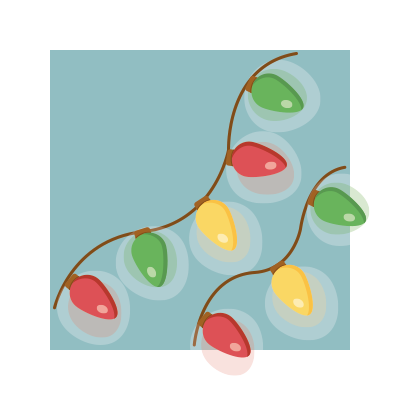













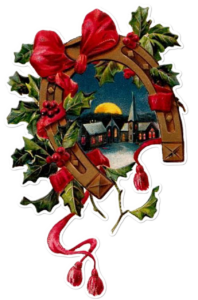

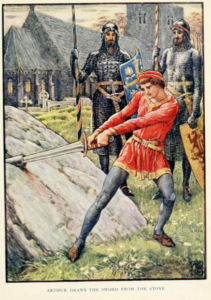
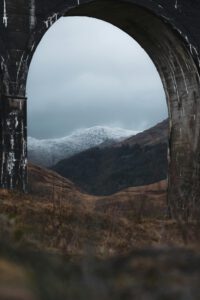

 Ring out, wild bells, to the wild sky,
Ring out, wild bells, to the wild sky,